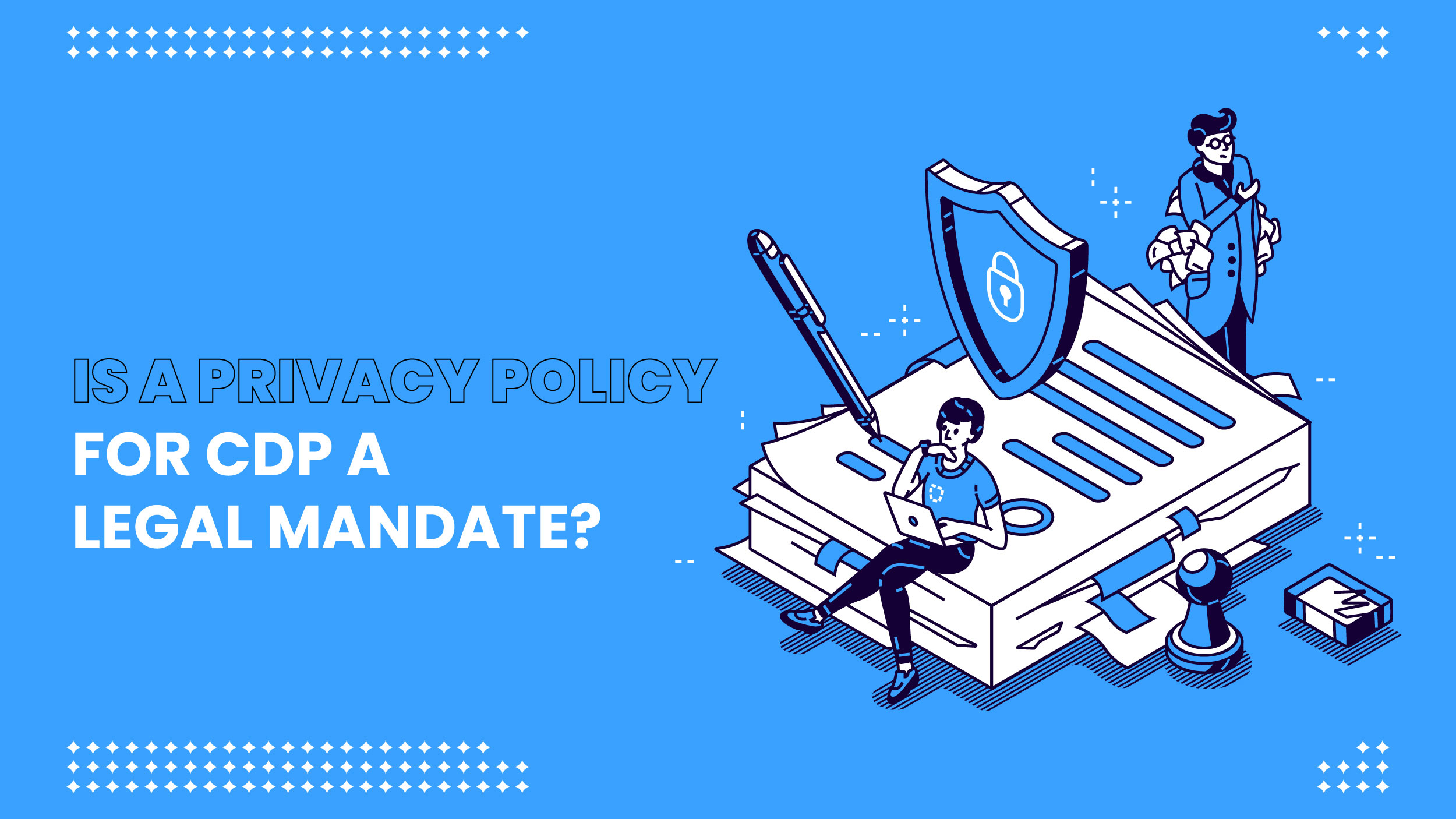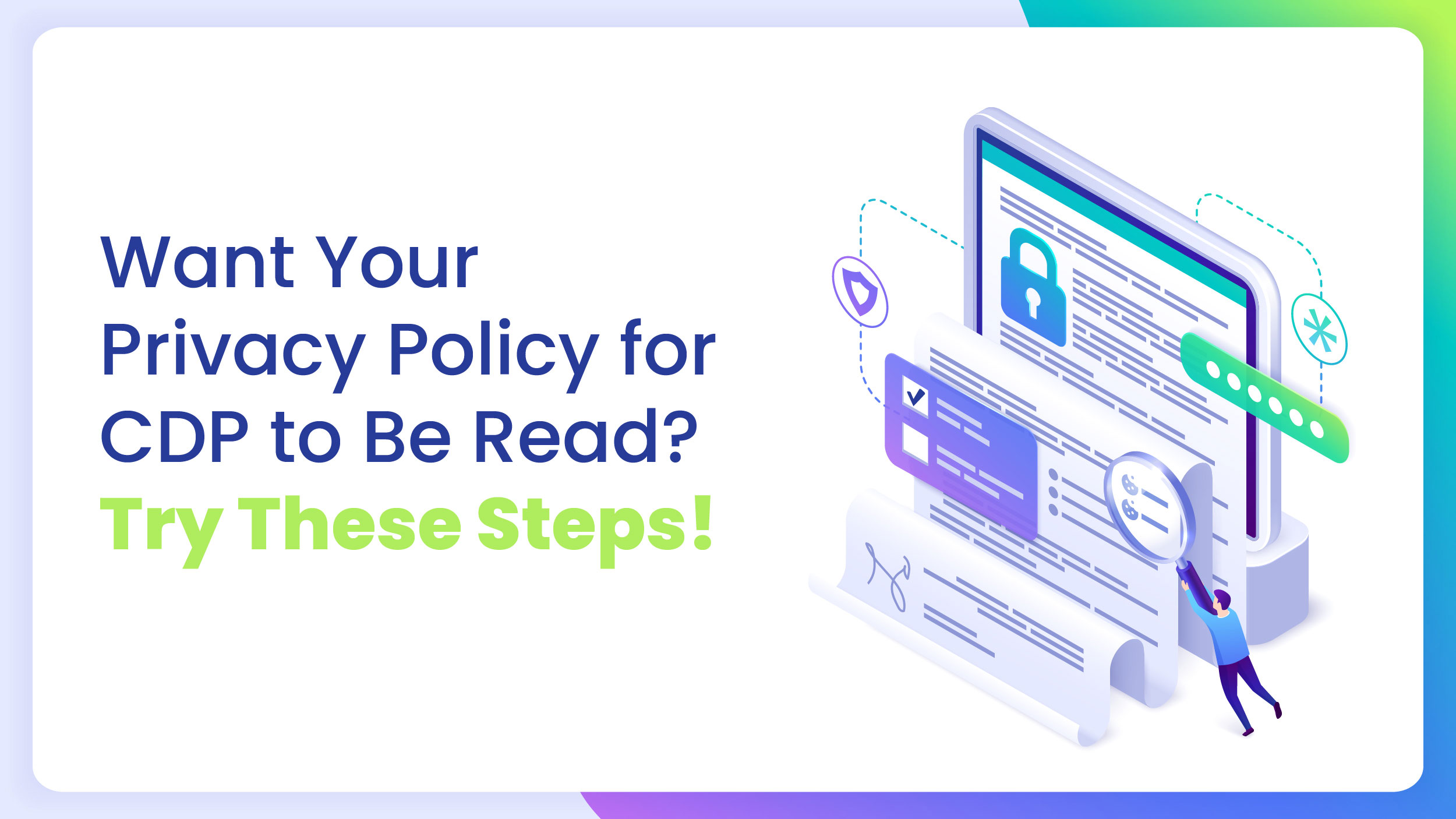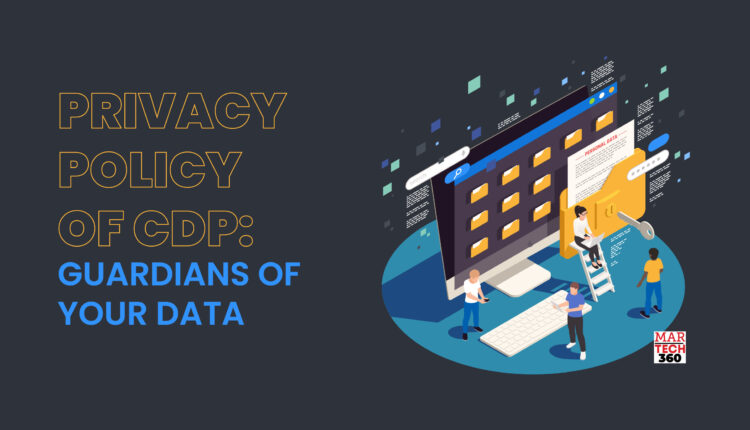You must have come across a privacy policy if you have ever downloaded an app, registered for an email address, joined a social media site, or made an online purchase—in other words, virtually anyone with access to a screen.
A clear and easily accessible privacy policy is crucial if your business gathers any kind of customer personal data. Let’s look at what privacy policies are for, how to manage them, and how you can strategically manage them to save yourself a ton of time (and legal hassles).
What is a Privacy Policy for Customer Data?
The privacy policy of a CDP (customer data platform) is a legal document that describes how the platform gathers, manages, maintains, and safeguards customer data. A CDP is a piece of technology that helps businesses gather and combine customer data from diverse sources to produce unified customer profiles for marketing and analytics needs. The privacy policy for a CDP is crucial for informing users (both customers and businesses) about how their data is handled within the platform and what rights they have in relation to that information.
A privacy policy for customer data includes elements such as data collection (e.g., names, emails, purchase history), data sources (websites, apps, CRM), and the purpose of data collection (customer profiles, personalized marketing). It also covers data usage, sharing with third parties, consent and opt-out options, data security measures, data retention period, user rights (access, correction, deletion), compliance with privacy laws (GDPR, CCPA), cookies and tracking usage, cross-border data transfers, and communication of policy changes to users.
A comprehensive and transparent privacy policy for a CDP is crucial to building trust with customers and ensuring compliance with data protection laws. Users must be well-informed about how their data is managed within the platform to make informed decisions about their privacy and data preferences.
Is a Privacy Policy for CDP a Legal Mandate?
 Short answer: Yes!
Short answer: Yes!
Privacy policies are required by a number of privacy regulation legislation. The regulations vary from place to place, and this is a very new phenomenon. One of these laws probably applies to your business.
The analytics software, email software, or advertising platforms that your business uses may require you to have a privacy policy even if none of the laws apply to you for some reason.
The law governing privacy is continually changing. One of the most recent privacy laws to come into force is the GDPR, and the CCPA will follow suit in a matter of months.
Let’s discuss some of these in detail.
1. California Online Privacy Protection Act (CalOPPA)
CalOPPA, also known as the California Online Privacy Protection Act, was revised in 2013 after it was enacted into a law in 2004. The Act dictates that companies must have a privacy policy in place if they are collecting personally identifiable information from California residents. The policy must be linked from the homepage of websites using the word “privacy”. The policy should explain how visitors can check and amend their data, how data is shared, when it becomes effective, and any revisions. The Office of California’s Attorney General is in charge of CalOPPA enforcement.
2. Children’s Online Privacy Protection Act (COPPA)
COPPA, in effect since 2000, safeguards the privacy of children under the age of 13. Complying with COPPA is necessary if your business obtains information from children. You should make this clear in your privacy policy even if you don’t. Post a privacy policy, inform parents about data collecting, get their consent, allow data review, follow data protection processes, and keep data as long as necessary in order to comply. FTC penalties of up to $170 million have been imposed for noncompliance.
3. Gramm-Leach-Bliley Act (GLBA)
The GLBA, which was passed in 1999 and targets financial institutions, requires that website visitors be informed about the collection, use, and protection of their personal data. Financial institutions that provide loans, financial advice, or insurance must abide by the rules. The GLBA requires an opt-out choice for sharing data with unaffiliated companies, unlike other statutes. Failure to comply can result in fines of up to $100,000 for each offense, as well as possible jail term for the offender.
4. General Data Protection Regulation (GDPR)
Regardless of where the company is located, it is legal to collect data from EU citizens under the GDPR, which has been in place since 2018. It is necessary to have a data privacy policy that outlines the data that is gathered, its use, how long it will be stored, and how to get in touch with the organization. Fines for violating the GDPR can reach €20 million or 4% of annual revenue. To avoid fines and uphold the standards for data privacy, compliance is essential.
5. California Consumer Privacy Act (CCPA)
Companies that gather data on citizens of California must comply with the CCPA, which came into effect on January 1st, 2020. Your data privacy policy needs to state which data is being collected, why it’s being gathered, and whether it will be sold or shared with others. Regardless of the reason for the infraction, non-compliance is punishable by fines of up to $7,500. To avoid fines and protect data privacy standards, compliance with the CCPA is vital.
Want Your Privacy Policy for CDP to Be Read? Try These Steps!
 The privacy policy of CDP is vital, but it’s equally important to ensure that your website visitors can easily comprehend the policy. Treating your privacy policy like a blog post can be helpful, aiming to make it engaging and reader-friendly to encourage people to read and understand it.
The privacy policy of CDP is vital, but it’s equally important to ensure that your website visitors can easily comprehend the policy. Treating your privacy policy like a blog post can be helpful, aiming to make it engaging and reader-friendly to encourage people to read and understand it.
Three actions will help you accomplish this:
Step 1: Use simple language
A lot of website visitors may get discouraged by complex legalese. Make sure your privacy policy for a CDP is drafted in a way that is clear and understandable, and that it conforms with all applicable laws, working with your legal team.
This is really effectively handled by Twitter’s privacy statement.
In its privacy statement, Twitter uses clear, plain language. It’s no surprise the website users read it.
Step 2: Include a “FAQs” section
Consider including a list of clear FAQs in your privacy policy. Visitors on the website will be able to quickly and simply find the answers to any inquiries they may have.
Wikimedia excels at this.
Step 3: Build it with the user in mind
To avoid intimidating website users, the privacy policy for a CDP should be written in an approachable manner. A turnoff might be large blocks of text. To make it simple for website visitors to navigate the policy, use brief paragraphs, bullet points, and internal links to other sections.
This is well illustrated by Netflix’s privacy policy.
Privacy Policy for CDP Becomes a Need
Every year, more laws relating to data privacy are passed. Additionally, users of websites are becoming more conscious of the management of their data. People are curious about your collection, your motivations, and your future plans.
Many of these issues can be resolved with the help of a privacy policy for customer data, but you must make sure that it is regularly updated. Spend some time every few months reviewing any updated terms of service for the tools your website utilizes and any updated data privacy regulations. This will enable you to stay on top of any adjustments that should be made to your privacy policy for a CDP.


Comments are closed.